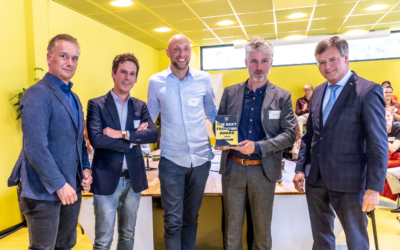
Erasmus University – Next Frontier award
Price awarded by former prime-minister Jan Peter Balkenende.
At the opening of the battery pre pilot line from Dutch research organization Holst Centre, where research on optimizing different components for next-gen batteries. In addition, it made clear that Holst Centre relies on spatial ALD to connect all these different components together, optimizing the interfaces between the different components.
According to Holst Centre: ‘We use our thin-film expertise to enhance lithium battery performance. With interfacial engineering we can improve the safety and lifespan of existing lithium-ion technologies. By using spatial Atomic Layer Deposition (sALD) we can optimize the interface between the electrodes and the electrolyte materials in many different battery designs and cell chemistries.’
Text continues below video
The Holst Centre and Kalpana Systems closely collaborate on the topic of thin films. With product analyses, the Holst Centre enables us to improve equipment performance. Besides this, we also collaborate as ecosystem partners in shaping the battery ecosystem in the Netherlands with the collaboration in the National Growth Fund (‘Nationaal Groeifonds’) and Battery trade missions to various OEMs and cell manufacturers.

Price awarded by former prime-minister Jan Peter Balkenende.

The province of South Holland granted Kalpana Systems and HyET Lithium the MIT:R&D collaboration subsidy for their project 'Next generation battery production'.

The municipality of Rotterdam has granted Kalpana Systems a subsidy for the scaling of their spatial ALD technology for the flexible PV market.